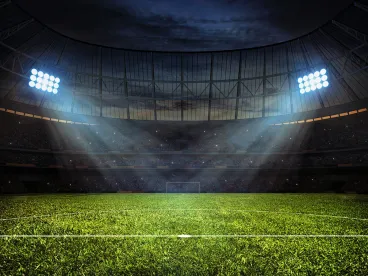Background
The first domino fell in late 2019 when Governor Newsom signed The Fair Pay to Play Act into law.[1] This was the first statute allowing collegiate student-athletes to profit off their name, image, and likeness (NIL). Specifically, the statute bars universities, athletic conferences and the NCAA from preventing student-athletes in California from profiting off their NIL. Despite the NCAA’s vigorous opposition initially, close to 30 states have since enacted similar legislation or have otherwise legalized NIL deals in their own states.[2] Moreover, last year’s unanimous Supreme Court ruling in NCAA v. Alston may not have reached the issue of NIL, but it did chip away at the NCAA’s ability to regulate student-athlete compensation.[3] Sensing the inevitably of its waning grip over its NIL policies, the NCAA then committed to a dramatic policy shift within days of the Alston ruling by permitting all student-athletes to begin profiting off their NIL as of July 1, 2021.[4] Even if a state has not yet passed NIL legislation, the NCAA policy change applies nationwide and now brands can partner with student-athletes in every state.
During the NIL era’s first six months, brands as big as Nike jumped into the new advertising market to promote their products and services, but most of the NIL deals have come from smaller businesses partnering with student-athletes with local followings.[5] And nearly half of NIL revenue has derived from brand promotions on student-athletes’ social media channels.[6] While a number of student-athletes qualify as macro-influencers (between 100,000 and 1,000,000 social media followers), many more qualify as micro-influencers (between 10,000 and 100,000 followers).[7] Depending on the specific consumer demographic a company hopes to reach, partnering with a student-athlete who qualifies as a micro or macro influencer can provide a means of reaching that targeted audience.
How to Navigate the Changing Rules
As more brands—big or small—dip their toes into this new avenue for marketing, they will need to keep an eye on the evolution of NIL policies at the university, conference, state, and federal levels.
On January 20, 2022, NCAA member schools will vote and are expected to pass the NCAA Board of Governors’ newly proposed constitution which will likely give individual universities and athletic conferences more authority to determine their NIL policies.[8] While most universities and conferences now permit NIL deals, many schools and conferences will likely decide to establish policies that heavily restrict access to certain NIL opportunities. For instance, BYU requires student-athlete NIL deals to adhere to the university’s honor code. This presumably bars companies promoting alcohol, tobacco, or caffeine products from partnering with BYU student-athletes.[9]
On top of that, the patchwork of slightly varying state laws will likely produce scenarios in which certain types of businesses can contract with student-athletes in some states but not in others. In addition, if any of the close to 20 states that have yet to pass any NIL legislation decide to do so, it will likely be motivated by a desire to impose specific restrictions beyond what is allowed by the current NCAA NIL rules. Mississippi’s NIL law, for example, prevents alcohol, gambling, adult entertainment, and cannabis businesses from signing deals with student-athletes.[10] Moreover, in California, companies cannot sign a student-athlete to an endorsement deal if the student-athlete’s team has a preexisting corporate agreement in the same industry category.[11] This means that an apparel brand cannot sign a NIL deal with a student-athlete if a rival brand already has an apparel deal with the school’s athletic program.
Finally, it remains possible that the federal government could enact legislation that once again changes how companies navigate NIL rules. If such a bill were passed, the biggest benefit for brands would likely be the resulting uniformity in NIL laws across the country. However, while at least six bills have been proposed in recent years, none have yet to make it out of committee.
Given brands cannot count on Congress to enact uniform NIL rules anytime soon, companies looking to partner with student-athletes should check for any policy updates at the university, conference, and state levels to confirm that any potential NIL agreement will not run afoul of any administrative or statutory rules.
Reminders Going Forward
Companies interested in inking their first NIL deals with student-athletes should keep in mind that current rules allow for a wide variety of agreements. While larger brands might look to college athletes with national name recognition and/or large social media followings, regional companies should consider partnering with student-athletes who are popular within their local markets. In addition, NIL deals have so far proven to range from six-figure deals to contracts in which a student-athlete might merely receive a few hundred dollars or even non-cash compensation.[12]
Brands should also remain mindful of other regulatory wrinkles that have not yet been ironed out. For instance, companies cannot currently enter NIL deals with foreign students. In fact, student-athletes in the United States on an F1 Visa could lose their visas by accepting NIL deals given these visas largely bar foreign students from off-campus employment.[13] However, companies can likely circumvent this rule if the student-athlete does not perform any work on behalf of the brand in the United States, and the use of that student-athlete’s NIL occurs outside the country.
As for high-school student-athletes, brands must also take note that only a handful of states currently allow such students to profit off their NIL. As of today, only California, New York, Alaska, Nebraska, and New Jersey currently permit it, but more states are beginning to amend their policies.[14] If a brand is looking to sign the next LeBron James while still in high school, first check to see if their home state would allow it.
In addition, companies looking to reach audiences in a local market should be careful not to offer NIL contracts that could be interpreted by the NCAA as disguised attempts to incentivize a player to play for a specific institution. This concern is especially relevant when trying to partner with prospective student-athletes (i.e. high school students) or student-athletes in the NCAA transfer portal. With this in mind, brands should avoid making offers contingent on a student-athlete enrolling at a specific university. Even if an offer is not conditioned on enrollment at a specific school, the NCAA might interpret any offers by companies located near a college as an improper “pay to play” scheme that could render the prospective student-athlete ineligible to compete. The best course of action would be to wait until that individual enrolls prior to making any NIL offers.
FOOTNOTES
[1] S.B. 206
[2] Tracker: Name, Image and Likeness Legislation by State – Business of College Sports
[3] 141 S. Ct. 2141 (2021).
[4] NCAA adopts interim name, image and likeness policy | NCAA.com
[5] Oregon’s Kayvon Thibodeaux releases NFT, inks pay-day with Nike (usatoday.com); The Smaller, Everyday Deals for College Athletes Under New Rules – The New York Times (nytimes.com)
[6] College athletes are making endorsement money ‘at a clip much higher than we expected,’ Opendorse CEO says (msn.com)
[7] What Is Influencer Marketing? How Can It Work For Your Brand? – Business 2 Community
[8] NCAA Governors agree to accept final recommendations for a new constitution – SBC Americas
[9] BYU — Athletes seeking to profit off NIL must adhere to the school’s honor code (espn.com)
[10] SB 2313 – History of Actions/Background (state.ms.us)
[11] Bill Text – SB-206 Collegiate athletics: student athlete compensation and representation. (ca.gov)
[12] Oregon’s Kayvon Thibodeaux releases NFT, inks pay-day with Nike (usatoday.com); UNC quarterback Sam Howell signs six-figure NIL deal (on3.com); The Smaller, Everyday Deals for College Athletes Under New Rules – The New York Times (nytimes.com)
[13] Foreign College Athletes Left Out of Rush for NIL Windfall | U.S. News® | US News
[14] NIL Momentum Increasing For High School Athletes (forbes.com)



 />i
/>i

